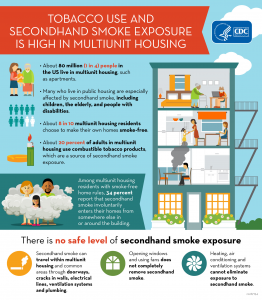The Issues of Testing for Secondhand Smoke
Having a neighbor who smokes can be irritating when you live in a multi-unit building. This secondhand smoke can cause short term effects such as triggering asthma, eye and respiratory irritation, and hoarseness. Long term exposure has been documented to cause the development of lung cancer. It can be especially irritating if the neighbor is trying to do this in direct contradiction with building rules. How can you test for it and what are the potential pitfalls in trying to get proof?
The Nice Way
Well, there are a number of things that you can do. Most are based on the friendly neighbor (you) going to the There are a number of things you can do. Most are based on the friendly neighbor (you) going to the alleged smoker and (in a nice way) asking them to stop. This is a good first step. It can go a long way if we live in a perfect world. Sadly, for most of us, this perfect world does not exist. In some instances, they will deny smoking altogether.
Getting the Proof
When nicely asking a neighbor to stop and contacting building management doesn’t resolve the issue, it can be time to take matters into your own hands.
We recommend starting with air and wipe testing for nicotine. This can provide proof to show that your property is being affected by a neighbor’s bad habit. An indoor air quality consultant can collect an air sample onto a thermal desorption tube to detect the presence of environmental tobacco smoke (ETS). This specific test measures the presence of three ETS markers: 2,5-Dimethylfuran, 3-Ethenylpyridine, and nicotine. The detection at any level of any of these compounds can act as an analytical confirmation that ETS is entering into the unit. A wipe test can also confirm if nicotine is found on the walls of your property.
The Challenges
Testing can be tricky! Air samples work best if the neighbor is smoking during the 2 hour test period. If the neighbor is not lighting up during the test, the results can be inconclusive. As strange as it sounds, many of my clients will often have a written log recording when the neighbor is smoking. Being that we are all creatures of habit, this is a good strategy for setting up the appointment time. If the client knows that the neighbor will typically smoke on Mondays, Tuesdays and Fridays from 10:00 AM to 11:30 AM, this can help the IAQ consultant to best time the testing.
What else can affect the tests?
Do they smoke outdoors on their porch or indoors? If outdoors, the smoke will likely dissipate in the ambient air and not provide a good reading. If they smoke indoors, is the odor the most detectable in the ceiling plenum or the duct work? Are furnaces or air conditioners in operation? In these instances, it is best to inform the consultant where the odors are strongest and under what conditions.
If the suspected smoker is next door, the consultant might open up an electrical outlet cover and place the testing tube in close proximity to the open wall to see if the smoke is collecting in the wall cavity. The timing needs to be just right, but it can deliver successful results.
Wind speeds, building pressurization and a multitude of other factors can also affect the test results. A qualified indoor air quality consultant, like Indoor Science, can significantly increase the chances of success. In many instances, getting proof is enough to convince your neighbor to quit smoking in areas which impact your dwelling.
 877-872-4339
877-872-4339  Contact Us
Contact Us 







